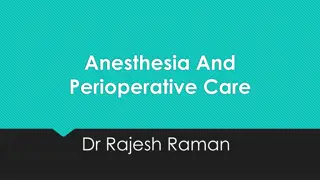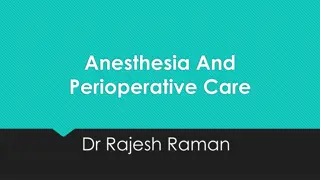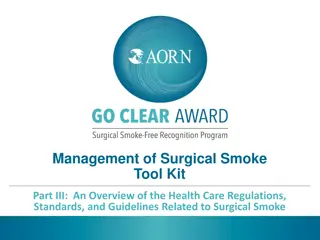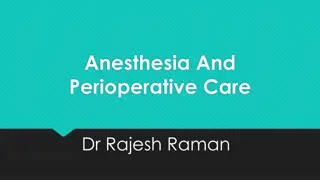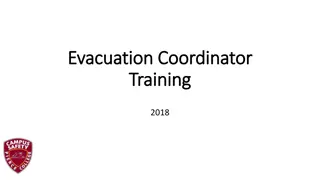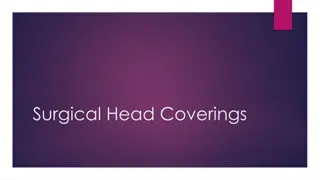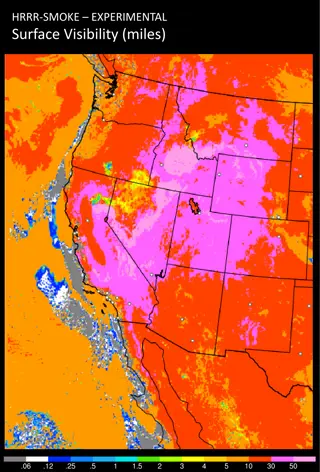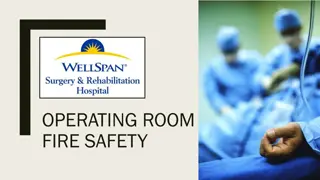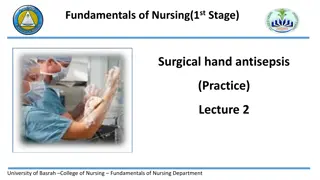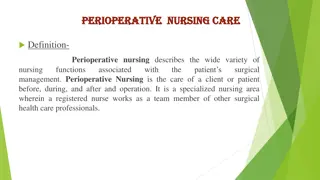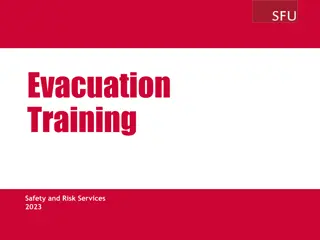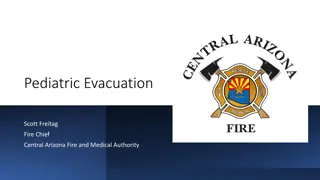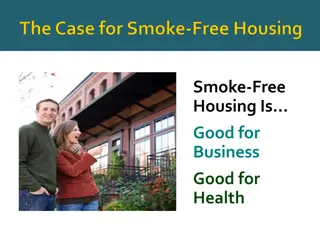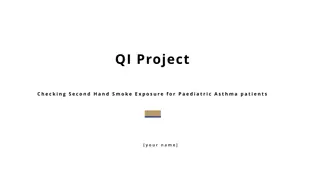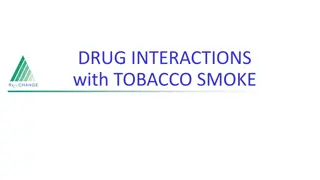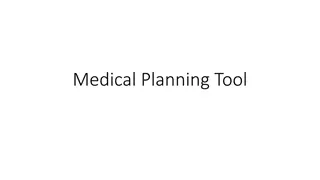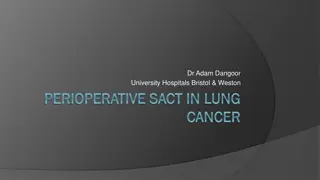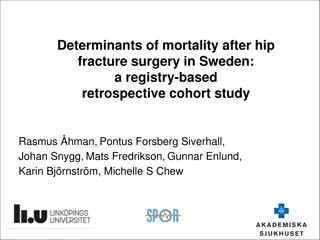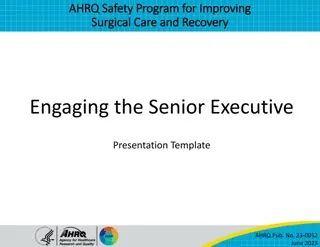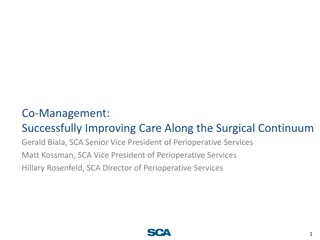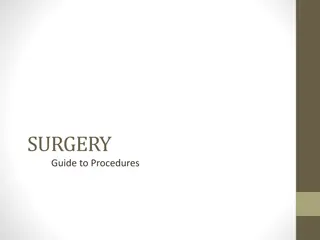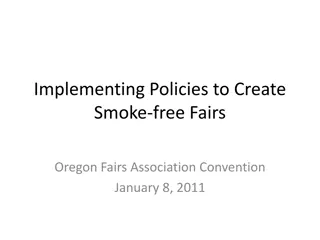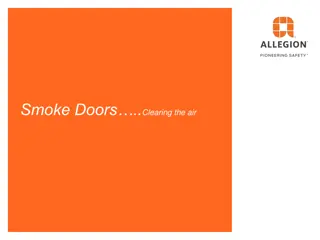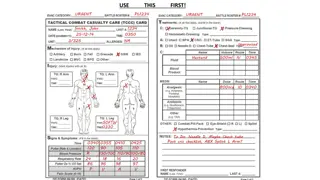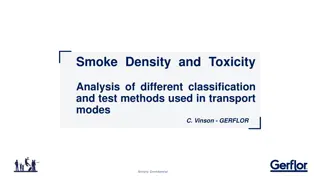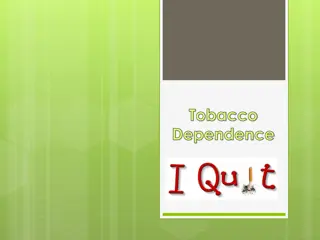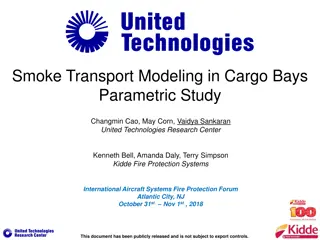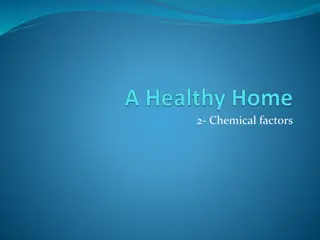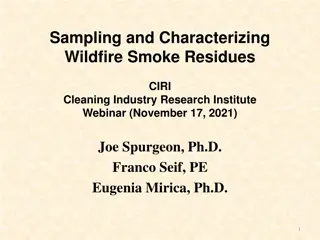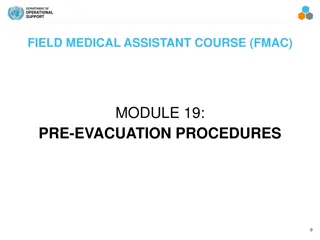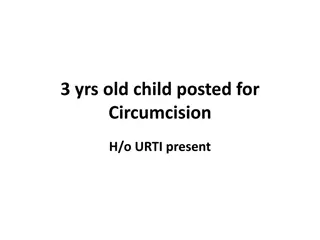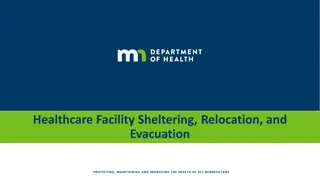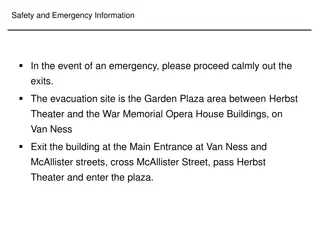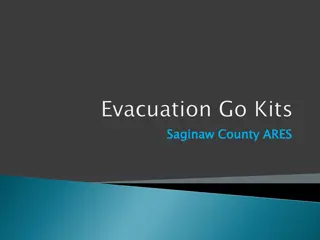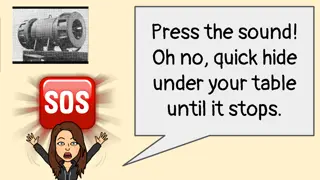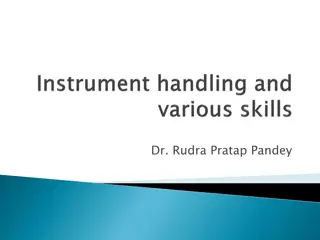Comprehensive Guide to Surgical Smoke Evacuation in the Perioperative Setting
This detailed guide covers the essential aspects of surgical smoke evacuation in the perioperative setting. It includes information on smoke evacuator systems, evaluating smoke evacuators, critical features to consider, smoke capture methods, triple filter system, and the use of wall suction with in-line filters. By following these recommendations, healthcare professionals can ensure a safe and efficient environment during surgical procedures.
- Surgical smoke evacuation
- Perioperative setting
- Smoke evacuator systems
- Safety measures
- Healthcare guidelines
Download Presentation

Please find below an Image/Link to download the presentation.
The content on the website is provided AS IS for your information and personal use only. It may not be sold, licensed, or shared on other websites without obtaining consent from the author. Download presentation by click this link. If you encounter any issues during the download, it is possible that the publisher has removed the file from their server.
E N D
Presentation Transcript
Management of Surgical Smoke Tool Kit Part IV: Surgical Smoke Evacuation
Instructions to the Learner This tool kit contains five slide decks related to the management of surgical smoke in the perioperative setting. It is recommended to review the slide decks in order. This is Part IV. Part I: Introduction to Surgical Smoke Part II: Hazards of Surgical Smoke Part III: An Overview of Health Care Regulations, Standards, and Guidelines Related to Surgical Smoke Part IV: Smoke Evacuation in the Perioperative Setting Part V: Additional Perioperative Nursing Care
Part IV Smoke Evacuation in the Perioperative Setting
Evacuate Surgical Smoke Smoke evacuator systems In-line filters MIS smoke evacuation systems
Evaluating Smoke Evacuators Many products Evaluate the features and benefits
Evaluating Smoke Evacuation Systems Type of filters (eg, ULPA, carbon) Type of filter monitoring system Does the system have variable flow rates to accommodate different amounts of smoke? automatic remote activation? Noise level Is the system compatible with existing products? How effective and efficient is the system? Cost
Critical Features of Smoke Evacuators Efficiency Filtering capability Suction power
Smoke Capture Motor rating Tubing size Site proximity Amount of smoke generated
Triple Filter System Pre-filter (captures large particles) ULPA filter (captures small particles) Charcoal filter (captures toxic gases and odors)
Wall Suction: Use an In-Line Filter Use an in-line filter: Use and change as recommended by the manufacturer s instructions Use standard precautions when changing and disposing of in-line filters
In-Line Filters with Wall Suction To wall suction > From the patient > Example of a filter
Wall Suction When there is no in-line filter: Damage to health care facility air exchange system
Evacuating Surgical Smoke During Minimally Invasive Procedures Use an individual smoke evacuation unit with a 0.1 micron filter Evacuate and filter surgical smoke during the procedure at the end of the procedure when the pneumoperitoneum is released .
Disposing of and Changing Smoke Evacuation Filters It s an occupational hazard. Wear personal protective equipment. Dispose of used smoke evacuation filters per the manufacturer s instructions and your facility s procedures for disposing of biohazardous waste.
Smoke Evacuation Program Increase awareness of the hazards of surgical smoke Promote and implement safe practices Interdisciplinary team Include perioperative RNs, anesthesia professionals, surgeons, scrub persons, and personnel from administration, infection prevention, employee health, safety, and risk management
Administration: Director Infection Prevention Safety Risk Management Perioperative RNs, Scrub Personnel, Sterile Processing, Environmental Services Promote Evidence Based Practices Surgeons and other Physicians Business and Finance: Contracts Capital Cost Analysis
Implementing Smoke Evacuation Practices Provide data and evidence to support best practices Scientific research data Financial analysis AORN guidelines for perioperative practice Work collaboratively Administrative Safety Committee Infection Prevention Risk Management
Barriers to Compliance for Smoke Evacuation Practices Equipment not available Surgeons resistance or refusal Noise Distraction Physician preference Cost Ergonomic difficulty of equipment --Watson, 2010 Equipment is noisy Bulkiness Excessive noise --Edwards & Reiman, 2012 Complacent staff -- Ball, 2010
Summary There are a variety of smoke evacuators available. Select a smoke evacuator that meets the needs of the patient and the health care facility. Wear PPE when handling and disposing of smoke evacuation filters. Convening an interdisciplinary team is recommended to help develop and maintain a successful Smoke Evacuation Program at your health care facility.
End of Part IV Please continue to the next slide deck: Part V Part I: Introduction to Surgical Smoke Part II: Hazards of Surgical Smoke Part III: An Overview of Health Care Regulations, Standards, and Guidelines Related to Surgical Smoke Part IV: Smoke Evacuation in the Perioperative Setting Part V: Additional Perioperative Nursing Care


